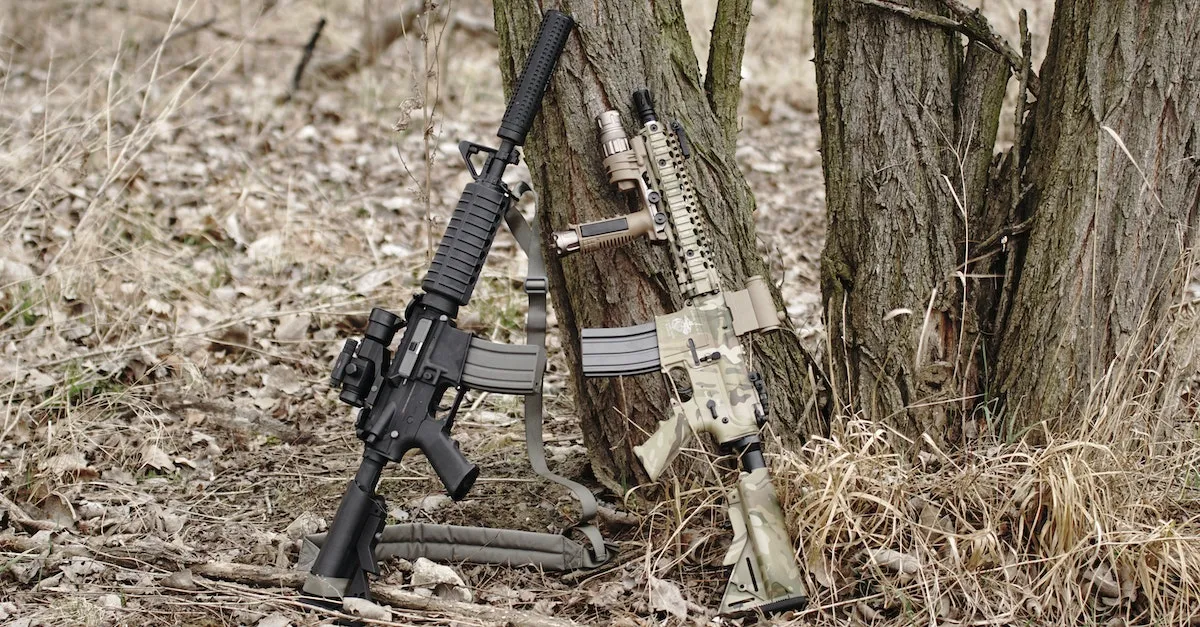Can You Legally Build An Ar-15 In California?
The AR-15 is one of the most popular and controversial rifles in America. This semi-automatic firearm is highly customizable, with owners able to choose from a wide variety of parts and accessories. But in a state like California with strict gun laws, what are the rules around building your own AR-15?
If you’re short on time, here’s a quick answer to your question: Building your own AR-15 rifle in California is legal, but it must comply with the state’s assault weapon ban and other firearm regulations. All home-built semi-auto centerfire rifles must be registered as assault weapons.
In this comprehensive guide, we’ll cover everything you need to know about legally constructing an AR-15 in California. You’ll learn about relevant state laws, required features, the registration process, and potential penalties for violations. We’ll also look at alternatives like featureless builds and differences between assembling a rifle from a kit vs. fabricating components yourself. Let’s take a detailed look at what’s allowed when it comes to homebuilt AR-15s in the Golden State.
Overview of California Gun Laws
California has some of the strictest gun laws in the United States. It is important for residents and visitors to understand these laws to ensure compliance and avoid legal trouble. This article will provide an overview of the state’s gun laws, focusing on three key areas: the assault weapons ban, the handgun roster, and other firearm regulations.
Assault Weapons Ban
California has implemented a comprehensive ban on assault weapons. This ban prohibits the manufacture, sale, transfer, and possession of specific firearms deemed as assault weapons. The state defines assault weapons based on specific features such as detachable magazines, pistol grips, and flash suppressors.
It is important to note that this ban also applies to building your own assault weapons, including AR-15 rifles.
The Assault Weapons Control Act (AWCA) outlines the specific criteria for firearms to be classified as assault weapons. Violating this law can result in severe penalties, including fines and imprisonment.
It is crucial to understand the criteria and consult with legal professionals if you have any doubts about the legality of a firearm.
Handgun Roster
In addition to the assault weapons ban, California has implemented a handgun roster. This roster lists handguns that are deemed safe and legal for sale in the state. Before purchasing a handgun, it must be on this roster.
The roster is regularly updated, and handguns that do not meet safety requirements are removed from the list.
Building your own handgun, including 80% lower receivers, is also subject to regulations. It is important to ensure compliance with the state’s laws and consult with legal professionals if you have any questions or concerns.
Other Firearm Regulations
Aside from the assault weapons ban and handgun roster, California has additional firearm regulations to further control the ownership and use of firearms. These regulations include background checks for all firearm purchases, limitations on magazine capacity, and requirements for firearm registration.
California also has specific laws regarding carrying firearms in public, including open carry and concealed carry. It is essential to familiarize yourself with these laws and obtain the necessary permits if you wish to carry a firearm legally.
For more detailed information on California’s gun laws, you can visit the official California Department of Justice website at https://oag.ca.gov/firearms. It is always advisable to consult with legal professionals who specialize in firearms laws to ensure you are fully informed and compliant with the regulations in your area.
Rules for Building Your Own AR-15 in California
Building your own AR-15 in California is legal, but it is important to understand and follow the state’s rules and regulations. Here are the key aspects you need to know:
Registration Requirement
When you build your own AR-15 in California, you are required to register it with the California Department of Justice. This registration process ensures that your firearm is in compliance with state laws and allows law enforcement agencies to keep track of firearms in circulation.
Failure to register your AR-15 can result in serious legal consequences, so it is crucial to complete the necessary paperwork and submit it within the specified timeframe.
Permitted Features
California has strict regulations when it comes to the features allowed on an AR-15. The state prohibits certain features that are commonly found on standard AR-15 rifles. These prohibited features include flash suppressors, pistol grips, forward pistol grips, and collapsible stocks.
It is important to familiarize yourself with the specific features that are allowed and prohibited in California to ensure that your build is compliant with the law.
Purchasing Lower Receiver
In California, the lower receiver of an AR-15 is considered a firearm and must be purchased through a licensed firearms dealer. This means that you cannot order a lower receiver online and have it shipped directly to your home.
Instead, you will need to visit a local dealer and go through the necessary background checks and paperwork to legally acquire the lower receiver. Once you have obtained the lower receiver, you can then proceed with the build process, keeping in mind the state’s regulations regarding permitted features.
It is worth noting that these rules and regulations may change over time, so it is essential to stay up to date with the latest laws in California. For more information on building an AR-15 in California, you can visit the official website of the California Department of Justice – Firearms Division.
Constructing a California Compliant AR-15
Building an AR-15 in California can be a complex process due to the state’s strict gun laws. However, it is possible to legally construct an AR-15 that complies with California regulations. This article will explore three methods for building a California compliant AR-15: the featureless build, the fixed magazine option, and obtaining the required locking parts.
Featureless Build
A featureless build is one option for constructing a California compliant AR-15. In order to be considered featureless, the rifle must not possess certain features that are prohibited by the state. These features include a pistol grip, collapsible stock, flash suppressor, and a forward pistol grip.
By removing or replacing these features, a rifle can be compliant with California law.
One popular alternative to a pistol grip is the use of a grip wrap or fin grip. This modification allows for a comfortable grip while still complying with the featureless build requirements. Additionally, a fixed stock can be used instead of a collapsible stock, and a muzzle brake can replace a flash suppressor.
Fixed Magazine Option
Another option for building a California compliant AR-15 is the use of a fixed magazine. California law defines a fixed magazine as one that cannot be removed without disassembling the firearm. By utilizing a fixed magazine, the AR-15 is not considered an assault weapon under the state’s laws.
One popular fixed magazine option is the use of a bullet button or a magazine lock device. These devices require the use of a tool, such as the tip of a bullet, to release the magazine. This modification ensures that the magazine cannot be easily removed, therefore meeting the fixed magazine requirement.
Obtaining Required Locking Parts
When constructing a California compliant AR-15, it is important to ensure that the rifle has the required locking parts. These parts prevent the rifle from being easily disassembled for magazine changes.
One commonly used locking part is the magazine lock, which prevents the removal of the magazine without the use of a tool.
Other locking parts include the upper receiver lock and the takedown pin. These locking mechanisms ensure that the rifle cannot be easily separated into its upper and lower receivers, thereby complying with California law.
It is essential to consult California’s specific gun laws and regulations when constructing a California compliant AR-15. Additionally, seeking advice from reputable firearm dealers and legal professionals can provide further guidance in navigating the complexities of building a compliant rifle.
Registration Process for Homebuilt Firearms
Submitting Photos and Info
To legally build an AR-15 in California, you must submit photos and information about your homemade firearm to the California Department of Justice (DOJ) within 10 days of completing it. This includes submitting clear photos showing the firearm from multiple angles and the serial number you engraved on it (see below for serial number requirements).
You’ll also need to provide your name, address, and other personal information. The DOJ will send you a confirmation letter by mail once they receive and approve your submission. This letter is your proof that your homemade AR-15 is properly registered in California.
Fees and Timeline
There is no fee to register a homemade firearm in California. Expect it to take 2-3 weeks to receive your registration confirmation letter after submitting photos and details to the DOJ. Be sure to keep copies of everything you submit.
If you don’t receive confirmation within 30 days, follow up with the DOJ to ensure they received your paperwork.
Keep Proof of Registration
Once your homemade AR-15 registration is approved, be sure to keep the DOJ confirmation letter with the firearm at all times as proof of registration. Failure to provide registration proof when requested by law enforcement could result in the firearm being confiscated and criminal charges filed.
It’s also wise to keep copies of your original submission paperwork in case any issues come up later. Following California’s homebuilt firearm rules is crucial for staying on the right side of the law.
Penalties for Violations of California Gun Laws
California has some of the strictest gun laws in the United States, and it is important for gun owners and enthusiasts to understand the potential penalties for violating these laws. Violating California gun laws can result in severe consequences, including fines, imprisonment, weapons confiscation, and loss of future gun ownership rights.
Fines and Imprisonment
Individuals found guilty of violating California gun laws may face significant fines and imprisonment. The exact penalties vary depending on the specific violation and the circumstances surrounding the offense.
For example, illegally manufacturing or selling firearms can result in fines of up to $10,000 and imprisonment for up to three years. Possessing an illegal firearm can lead to fines of up to $1,000 and up to one year in jail.
Weapons Confiscation
In addition to fines and imprisonment, individuals who violate California gun laws may have their weapons confiscated. Law enforcement agencies have the authority to seize firearms that are illegally possessed, manufactured, or sold.
Confiscated firearms are typically held as evidence and may be permanently forfeited if the owner is convicted of a gun law violation.
Loss of Future Gun Ownership Rights
Violating California gun laws can also result in the loss of future gun ownership rights. Individuals convicted of certain gun law violations may be prohibited from owning or possessing firearms in the future.
This can have long-lasting consequences and may impact a person’s ability to protect themselves, participate in certain activities such as hunting, or exercise their Second Amendment rights.
It is important to note that the information provided here is a general overview of penalties for violating California gun laws. The actual penalties can vary depending on the specific circumstances of each case and the applicable laws at the time of the offense.
If you are facing gun law charges or have questions about California gun laws, it is advisable to consult with a knowledgeable attorney who can provide guidance based on your specific situation.
For more information on California gun laws and penalties, you can visit the California Department of Justice’s official website https://oag.ca.gov/firearms.
Conclusion
Although restricted compared to other states, building your own AR-15 rifle in California is legal provided you adhere to the state’s assault weapon ban and registration requirements. While the process is more complex, you can construct a compliant AR-15 using either a featureless or fixed magazine configuration.
Carefully follow all regulations around purchasing and registering lower receivers, permitted features, and locking mechanisms. The penalties for overlooking any details can be severe. With proper research and compliance, Californians can legally enjoy customizing and shooting homebuilt AR-15s.
While the rules may continue to evolve, staying up-to-date on current laws allows responsible gun owners to exercise their Second Amendment rights even in highly regulated states like California.








